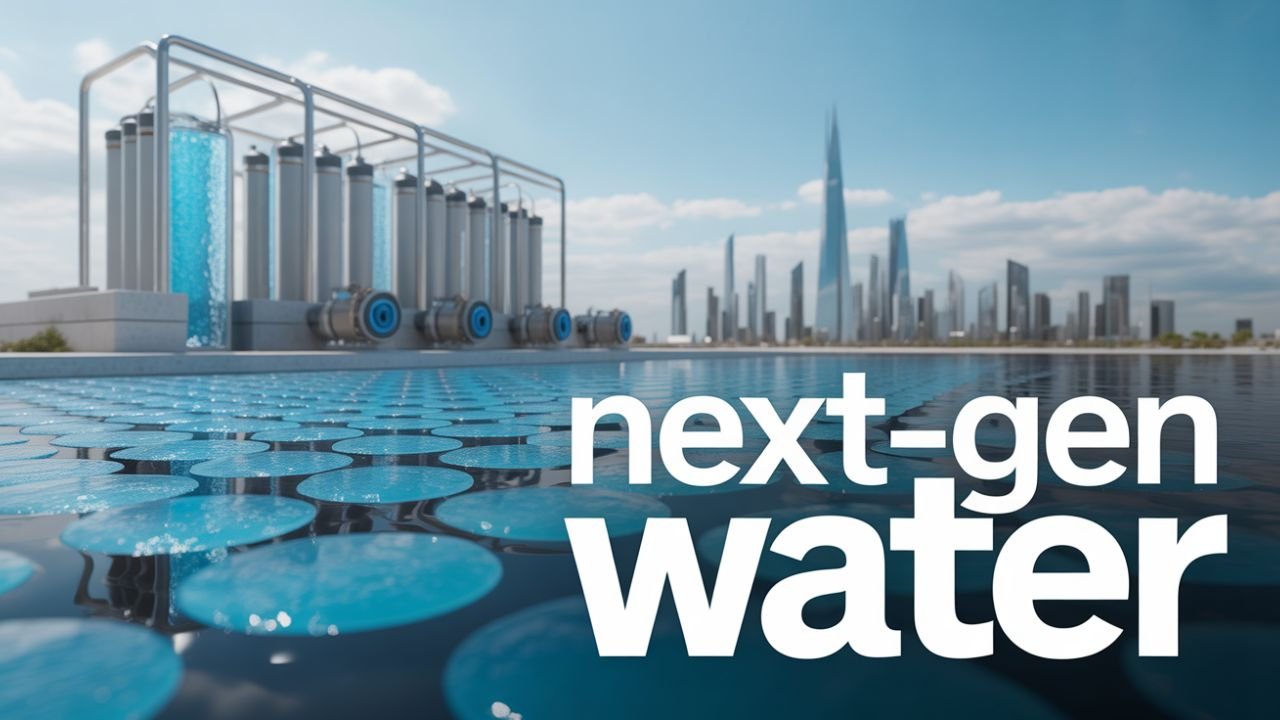Next-Gen Membranes: Fresh water sources are continuously decreasing across the world. Increasing population, industrialization and climate change are having a serious impact on the availability of clean water. In such a situation, the need for reuse of sea water, wastewater and rainwater has increased rapidly. In the field of water purification and water recycling, membrane-based technologies, especially reverse osmosis (RO), are being considered more eco-friendly and energy-efficient than traditional thermal purification technologies such as multistage flash and multiple-effect distillation.
However, traditional RO membranes have some limitations. These include high capital cost, low purification capacity, membrane fouling problems, flux drop at high pressure, chemical instability and low tolerance to temperature, acids, alkalis, chlorine and organic solvents. These challenges have motivated scientists to develop novel membrane materials that can provide high water permeability and high salt rejection capacity.
Properties of an ideal membrane
The ideal RO membrane should have high flux, high selectivity, stability, and resistance to chlorine and fouling. In addition, it should be mechanically strong, chemically inert and extremely thin to maximize water permeability. In recent years, nanostructures such as zeolites, metal-organic frameworks, ceramics and carbon-based materials have attracted special interest in this field. These materials provide high chemical resistance, high flux and high salt rejection rates.
Conventional zeolite and ceramic membranes have problems such as difficulty in mass production, high cost and brittleness. It is possible to fabricate high flux membranes using carbon nanotubes (CNTs), but it is still challenging to prepare them stably and densely over large areas.
Graphene-based membranes: A new direction
In recent years, graphene and graphene oxide (GO)-based materials have attracted attention due to their potential in water purification. The characteristics of graphene such as unique structural properties, high mechanical strength and minimal thickness make it ideal for membrane fabrication.
Graphene nanosheets have the advantage of being extremely thin, capable of operating under high pressure, and are more durable than conventional polymer RO membranes. Nanoporous graphene (NPG) membranes can be used to provide high water flux and high salt rejection rates. However, it is still a challenge to prepare single layer graphene membranes on a large scale and maintain them with the required subnanometer pores.
Graphene oxide (GO) has a chemically active surface and layered structure, making it suitable for making independent membranes or GO/polymer composite membranes. GO membranes have excellent foul-resistance, which is extremely important for water purification processes.
Graphene Structure and Synthesis
Graphene is an atom-thick 2D sheet with sp2 carbon atoms arranged in a hexagonal honeycomb structure. Its high theoretical surface area (~2630 m²/g), high thermal conductivity (~5000 W/m·K) and excellent electrical conductivity make it a focus of multilayer interest. The most important property of graphene is its extremely versatile carbon backbone, which allows it to be easily functionalized.
Mechanical Properties of Nanoporous Graphene
An ideal RO membrane should be thin, mechanically strong and have controlled pore size for maximum flux. Graphene nanosheets offer the best combination of these properties. Pristine graphene has a high in-plane tensile toughness (Young’s modulus ~1 TPa), making it workable even at high pressures.
Role of nanoporous graphene and GO in water purification
Nanoporous graphene membranes provide high water flow rates and high salt rejection rates. Computer simulations and experimental models show that water molecules can easily pass through graphene membranes while ions and other impurities are blocked.
GO membranes also have excellent water permeability and water molecules can easily pass through them while vapors, liquids and gases cannot penetrate. GO membranes can be incorporated into polymer blends or prepared independently to enhance their mechanical strength and anti-microbial properties.
Conclusion
Nanoporous graphene (NPG) and graphene oxide (GO) nanosheets offer great potential as next-generation water purification membranes. The ultrafast water permeability, high mechanical strength, and ionic and molecular selectivity of these membranes make them ideal for energy-efficient and high-flux water purification systems.
The future mass production and commercial applications of these technologies can make the seawater and wastewater purification process more efficient and sustainable.
